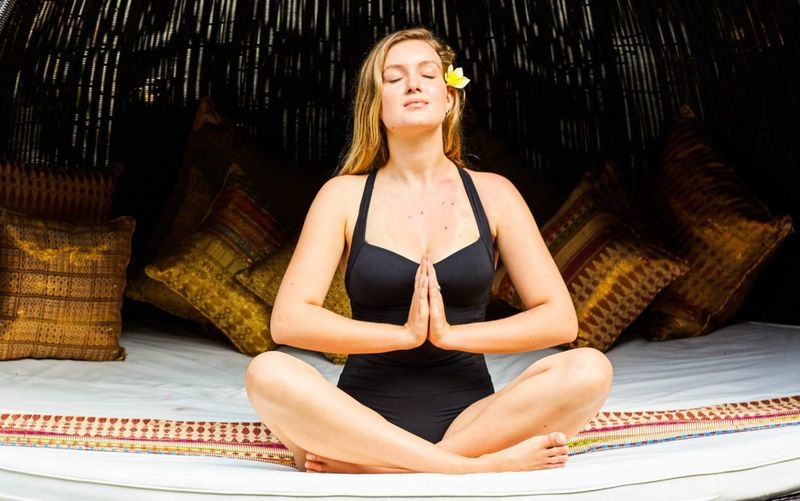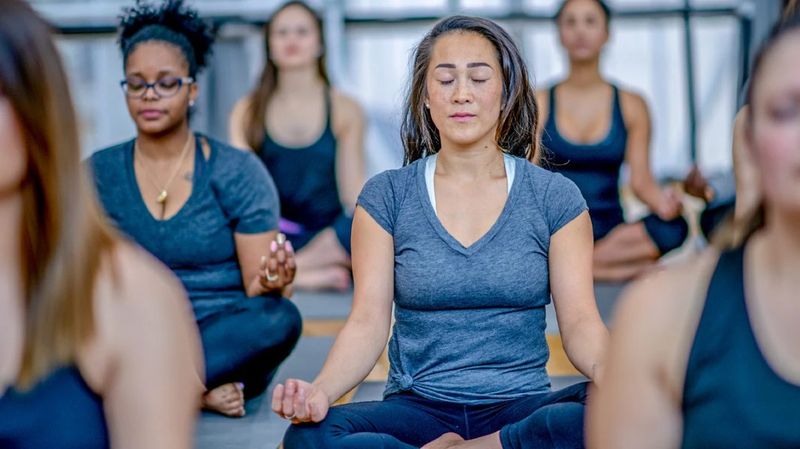12 Daily Habits That Quiet the Anxious Mind

Our minds often race with worries and fears that can make daily life feel overwhelming. Anxiety affects millions of people, making simple tasks seem impossible and stealing our peace. The good news is that we can train our brains to be calmer through simple daily practices. These 12 habits can help quiet your anxious thoughts and bring more peace to your everyday life.
1. Morning Mindfulness Meditation

Starting your day with just five minutes of quiet meditation creates a foundation of calm. Find a comfortable spot, close your eyes, and focus on your breathing as thoughts come and go without judgment.
Many people notice a significant difference in their anxiety levels when they practice this habit consistently. Your mind becomes trained to return to this peaceful state throughout the day when stress appears.
Keep it simple at first – even one minute is better than nothing. The key is making it part of your morning routine, just like brushing your teeth or getting dressed.
2. Digital Sunset Ritual

Blue light from screens keeps our brains alert and can trigger anxiety, especially before bedtime. Creating a digital sunset by turning off all screens at least one hour before sleep gives your mind necessary downtime.
Replace scrolling with calming activities like reading a physical book, gentle stretching, or writing in a journal. Your nervous system will thank you for this electronic break.
Many people who struggle with racing thoughts at night find this habit makes falling asleep much easier. The separation from constant information input allows your brain to process the day and prepare for rest.
3. Nature Immersion Breaks

The natural world has a remarkable ability to reset our nervous systems. Taking even a 10-minute walk outside during your day can significantly reduce stress hormones and quiet anxious thoughts.
Notice specific details around you – the pattern of leaves, cloud shapes, or the feeling of wind on your skin. This sensory focus pulls your mind away from worry loops and into the present moment.
Research shows that time in green spaces lowers blood pressure and cortisol levels. Try to make these nature breaks a non-negotiable part of your day, especially when you feel anxiety building.
4. Worry Journal Practice

Anxious thoughts lose power when transferred from your mind to paper. Keep a small notebook handy and spend five minutes writing down your worries without judgment or editing.
The physical act of writing activates different brain pathways than ruminating. Many people find that seeing their concerns on paper helps them gain perspective and realize which worries are actually solvable.
After writing, take a moment to identify which items you can take action on and which are beyond your control. This simple sorting process helps your brain stop spinning on things you can’t change.
5. Breath-Focused Movement

Gentle movement synchronized with your breath creates a powerful anxiety-reducing effect. Unlike intense workouts, activities like yoga, tai chi, or simple stretching with breath awareness calm your nervous system directly.
The key is matching movement to breathing – inhaling as you expand or reach, exhaling as you fold or release. This mindful coordination interrupts the anxiety cycle by engaging both body and mind.
Even five minutes of breath-focused movement can shift your mental state. Many people find this practice especially helpful during mid-day anxiety spikes when sitting still feels impossible.
6. Gratitude Spotting

Anxiety thrives on negative focus, but you can retrain your brain through active gratitude spotting. Throughout your day, pause to notice three specific things you appreciate, no matter how small – the taste of your coffee, a friendly text, or a moment of laughter.
This practice isn’t about forced positivity. Instead, it’s training your attention to catch the good that already exists alongside your worries.
Speak your observations aloud or jot them down. The act of acknowledging positive elements creates new neural pathways that make your brain less likely to get stuck in anxiety loops.
7. Sensory Grounding Technique

When anxiety spikes, your brain often disconnects from the present moment. The 5-4-3-2-1 grounding technique pulls you back using your senses: notice 5 things you see, 4 things you can touch, 3 things you hear, 2 things you smell, and 1 thing you taste.
This method works because sensory awareness interrupts the brain’s alarm system. By directing attention outward to concrete details, you short-circuit the internal worry spiral.
People who struggle with panic attacks find this especially helpful. The technique can be done anywhere without anyone noticing, making it perfect for anxiety that strikes during work or social situations.
8. Connection Conversations

Anxiety often grows when we isolate ourselves. Making a daily habit of one meaningful conversation – even just 10 minutes – provides emotional regulation that no solo activity can match.
Quality matters more than quantity here. A brief check-in with a friend where you both share something real about your day creates more anxiety relief than hours of surface-level interaction.
Studies show that authentic social connection triggers oxytocin release, which directly counters stress hormones. Try scheduling regular check-ins with supportive people rather than waiting until you feel like reaching out.
9. Bedtime Brain Dump

Nighttime anxiety often comes from your brain’s attempt to process unfinished business. Creating a bedtime brain dump ritual helps clear mental clutter before sleep.
Take three minutes to write tomorrow’s to-do list, any lingering worries, or random thoughts bouncing in your head. The physical act of transferring these items to paper signals your brain that it’s safe to let go of them until morning.
Follow this with a simple statement like “I’m done thinking about these things until tomorrow.” This psychological boundary helps your mind understand it has permission to rest rather than problem-solve through the night.
10. Progressive Muscle Relaxation

Physical tension and mental anxiety feed each other in a continuous loop. Progressive muscle relaxation breaks this cycle by teaching your body what true relaxation feels like.
The technique involves tensing each muscle group for 5-7 seconds, then releasing completely. Start with your feet and work upward to your face. The contrast between tension and release helps you identify and release muscle tightness you might not even realize you’re holding.
Regular practice trains your body to respond more quickly to relaxation cues. Many people find this especially helpful for anxiety that manifests physically through symptoms like headaches, jaw clenching, or stomach issues.
11. Single-Task Focus Periods

Multitasking creates a constant low-level stress state that feeds anxiety. Setting aside periods for single-task focus gives your brain much-needed relief from the attention-splitting that exhausts your mental resources.
Choose one activity – whether cooking, reading, or working on a project – and do only that thing for 25 minutes. Put your phone in another room and close unnecessary browser tabs.
The calm that comes from this practice extends beyond the activity itself. Your brain learns it can fully engage with one thing without constantly scanning for threats or checking for updates, creating a foundation for decreased overall anxiety.
12. Joy Scheduling

Anxiety narrows our focus to threats and problems, but deliberately scheduling small joys expands our emotional range. Each day, plan at least one activity that reliably brings you pleasure – even something as simple as a favorite song or food.
The key is making this non-negotiable, especially on difficult days. When anxiety is high, we tend to drop enjoyable activities first, which only reinforces the brain’s focus on problems.
By protecting these moments, you remind your nervous system that life contains more than just threats. This wider perspective makes anxious thoughts less dominant in your mental landscape.

Comments
Loading…